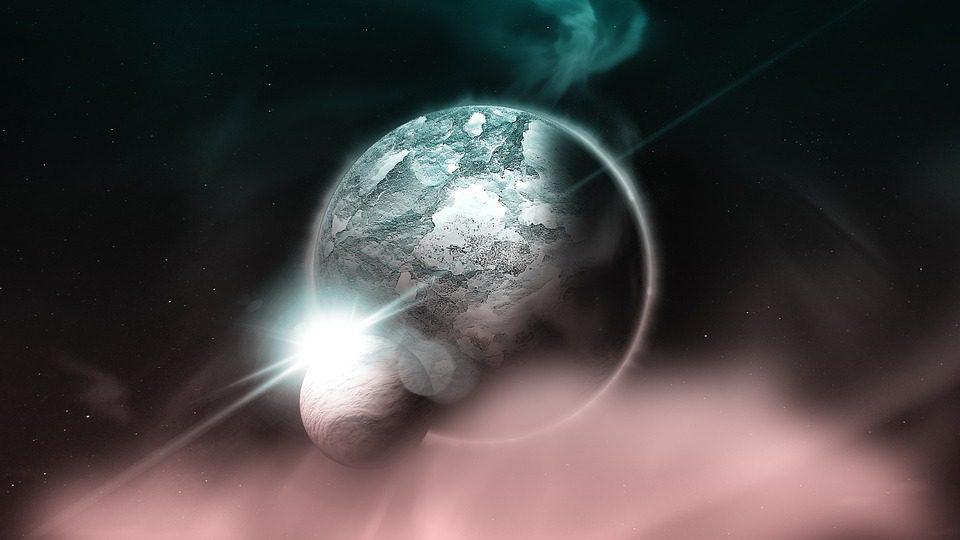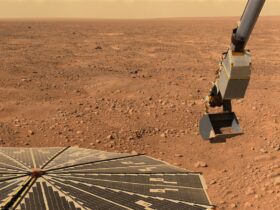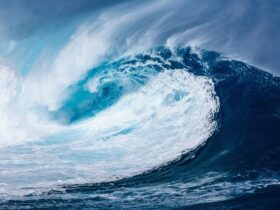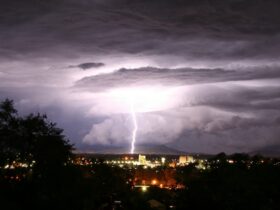A potential biosignature has been spotted on an exoplanet 124 light-years from Earth.
Not clickbait—this is real data from the James Webb Space Telescope. A mysterious planet called K2-18b may be emitting the chemical fingerprints of life, and the molecules in question—dimethyl sulfide (DMS) and dimethyl disulfide (DMDS)—are only known to be produced by marine life here on Earth.
But before you scream “Aliens!”, let’s break down what’s actually happening—and why this could be a seismic shift in exoplanetary science.
What’s K2-18b and Why It’s Turning Heads
-
Planet type: Possible Hycean world—a water-covered planet with a hydrogen-rich atmosphere
-
Orbit: Located in the habitable zone of a red dwarf star
-
Size: 8.6 times Earth’s mass, 2.6 times larger—think mini-Neptune with ocean potential
-
Location: 124 light-years away, in the constellation Leo
In 2021, astrophysicists proposed the concept of Hycean planets. Now in 2025, this one just gave us the strongest atmospheric biosignature yet from outside our solar system.
Why the DMS Detection Matters
DMS on Earth is exclusively produced by marine phytoplankton. There’s no known non-biological source on our planet. That’s why detecting it—or even just a strong signal resembling it—in another planet’s atmosphere sets off alarms in astrobiology circles.
The JWST team used three different instruments across two separate infrared bands to scan K2-18b. They found:
-
Methane and carbon dioxide in high quantities
-
Strong signals indicating DMS/DMDS
-
A lack of ethane, which raises new questions about how these gases persist
This isn’t fringe work—it was published in The Astrophysical Journal Letters and is already stirring debate across the field.
Why It’s Not a “Discovery” Yet (But Close)
To claim a scientific discovery of life, the standard is five-sigma significance—a probability of less than 0.00006% that results are random. This finding hit three-sigma (0.3% chance of error). That’s not noise. That’s a major clue.
Independent confirmation is now mandatory.
Data from this study is being released to external researchers who will test it across new models and atmospheric simulations.
Competing Theories: Is K2-18b a Mini-Neptune or a Molten Inferno?
Not everyone agrees on what kind of world we’re even looking at. Some propose a Hycean world. Others argue for a hot magma ocean or a mini-Neptune. These disagreements matter, because biosignature interpretation depends heavily on what kind of planet you’re dealing with.
MIT’s Sara Seager warns against overinterpretation:
“Some gases just don’t belong without life. But it’s too early to say if this one fits the bill.”
That’s caution, not dismissal. In fact, even the skeptics are excited.
The Stakes: New Threshold for Biosignature Detection
Let’s talk metrics:
-
Estimated DMS concentration: Thousands of times higher than Earth’s global average
-
Required production rate: ~20x Earth’s total marine DMS output
-
Abiotic explanation: Unlikely, but still theoretically possible
If these numbers hold up under peer review, they set a new benchmark in the search for life.
-
Follow-up Webb observations: 16–24 hours of telescope time needed
-
Cross-team validation: Independent astrophysics labs will analyze the data
-
Comparison with other Hycean candidates: Expect a global telescope race
-
Biomarker database expansion: Dimethyl compounds could now become key biosignature candidates
This is the inflection point where planetary science starts looking more like biology.
Life Beyond Earth Is No Longer a Sci-Fi Fantasy
We’re not talking about little green men. We’re talking about molecular evidence—the type of life that turns oceans into atmospheric beacons. K2-18b may be the first world to show us that life, even simple microbial life, is a cosmic default—not a miracle.
The bigger question isn’t if we’ll confirm life elsewhere. It’s:
Are we ready for what that means?
This isn’t theoretical anymore. The data is in. The clock is ticking.
If you’re building models, tech, or policy around space colonization, biosignature detection, or planetary defense—start recalibrating. This is your early signal.












Leave a Reply